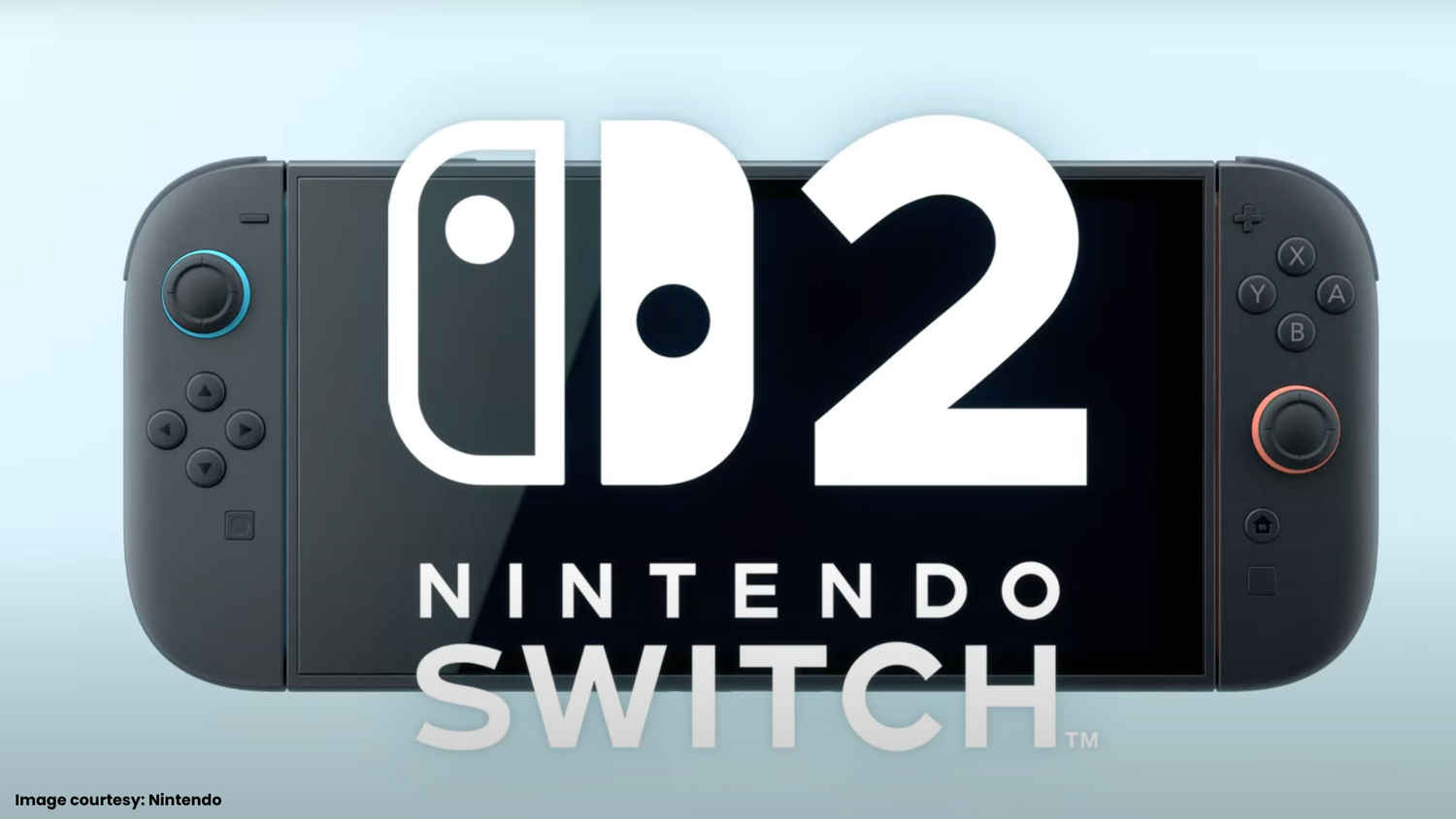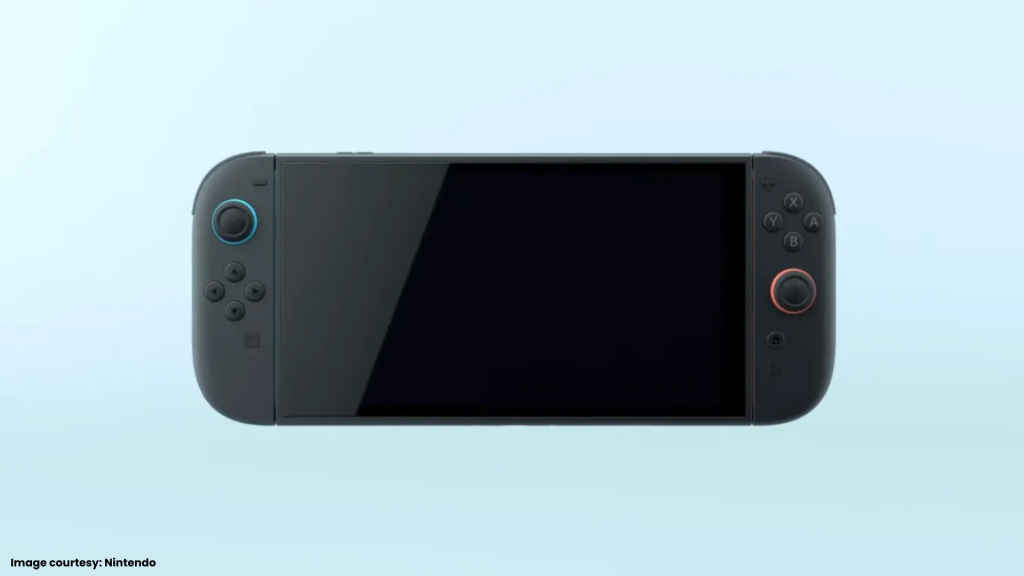Nintendo Switch 2: Will it redefine hybrid gaming in 2025?

Nintendo has finally confirmed the much-anticipated successor to its wildly successful Switch console, aptly named the Nintendo Switch 2. Set to launch in 2025, this next-generation console continues the hybrid gaming concept while refining it with modern enhancements and thoughtful design tweaks. The Switch 2 aims to resonate with both new audiences and loyal fans of the original, a delicate balancing act that Nintendo has often mastered. Let’s have a look at what the console has to offer –
 Survey
SurveyDesign evolution: A refined hybrid experience
The Switch 2’s design echoes its predecessor but brings notable refinements. At first glance, the most apparent change is its larger 8.4-inch screen, which Nintendo is expected to pack in this handheld. While unconfirmed, industry leaks point to this being an OLED panel, offering improved colour accuracy and contrast – an upgrade likely to be appreciated during both handheld and tabletop play.
The hardware now sports a redesigned kickstand, a welcome evolution from the original’s flimsy setup. This U-shaped stand provides improved stability, addressing long-standing feedback from Switch users. Another subtle yet significant update is the introduction of magnetic Joy-Con controllers. The magnetic attachment mechanism simplifies handling while retaining the flexibility that defined the original model.

A mysterious “C” button, located below the Home button on the right Joy-Con, has piqued curiosity. Speculation suggests it could enable contextual shortcuts or enhanced functionality, but Nintendo has yet to clarify its purpose. Even minor updates, such as larger SL and SR buttons, reflect a broader focus on accessibility and comfort for a wide range of players.
Also Read: What is ChatGPT Tasks: Automating productivity, one reminder at a time
Backward compatibility and game library
Nintendo’s decision to support backward compatibility is a great move for its loyal fan base. Physical cartridges and digital titles from the original Switch are compatible with the new console, ensuring a seamless transition for users who have built substantial game libraries. However, there’s a catch – Nintendo has stated that not all games may be fully compatible, leaving room for some uncertainty.
For the uninitiated, backward compatibility also serves as an excellent gateway to explore acclaimed classics from the original Switch’s extensive catalogue. Meanwhile, the Switch 2 offers new experiences as well. During its reveal, Nintendo teased a new Mario Kart instalment. Early glimpses showed racers speeding through “Mario Bros. Circuit,” a desert-themed track adorned with charming landmarks like Yoshi’s Drive-In and Luigi’s Tires billboards. It’s a clever nod to the series’ fan service while promising fresh gameplay dynamics.
Performance and technical ambitions
While Nintendo is known for prioritising gameplay innovation over raw technical power, the Switch 2 appears to narrow the gap between ambition and capability. Leaks suggest the console is powered by an ARM Cortex-A78AE processor with eight cores, 12GB of RAM, and 256GB of UFS 3.1 storage. These upgrades translate to faster loading times, better multitasking, and support for more graphically demanding titles.
Nintendo is also likely to retain its focus on energy efficiency, ensuring the console performs well in handheld mode without compromising battery life. While details remain speculative, such hardware choices indicate a shift toward supporting higher-resolution gameplay and immersive environments – without abandoning Nintendo’s characteristic charm.
Market positioning of the Nintendo Switch 2
Nintendo has consistently carved its niche in the gaming industry by prioritising affordability and creativity over direct competition with the hardware-heavy PlayStation and Xbox ecosystems. Analysts suggest the Switch 2 may launch around the $400 mark, staying true to the company’s ethos of delivering value-driven entertainment.
Also Read: India’s AI Dreams at Risk? US GPU Clampdown Explained: What does it mean for consumers?
However, this mid-range pricing strategy comes with its challenges. Nintendo must ensure that the enhancements in the Switch 2 justify the upgrade for existing users while attracting new players who may view the original Switch’s library as a strong enough entry point. The compatibility of existing accessories and peripherals could also play a crucial role in shaping its value proposition.
Challenges ahead for the Nintendo Switch 2
The success of the Switch 2 depends on more than just hardware improvements. Competing in an increasingly crowded gaming landscape, where mobile devices and cloud gaming platforms are gaining traction, Nintendo must deliver compelling first-party titles to differentiate itself. Additionally, the extent to which the Switch 2 integrates online services, such as expanded functionality for its Nintendo Switch Online subscription, could influence its long-term appeal.
The idea of transitioning seamlessly to the Switch 2, without abandoning this library, feels more reassuring than revolutionary – a testament to Nintendo’s understanding of its audience. At the same time, the deliberate design changes suggest Nintendo is addressing minor yet impactful user pain points. The larger display, improved kickstand, and redesigned Joy-Cons are all incremental upgrades, but they collectively signal a maturing of the hybrid console concept. While some may question whether these changes merit an entirely new device, others will appreciate the long-term vision Nintendo seems to be pursuing.
Another potential hurdle is managing expectations. With leaks and rumours fueling excitement, the Switch 2 risks falling victim to overhyped speculation. Striking the right balance between innovation and familiarity is a delicate task – one Nintendo has accomplished before but cannot take for granted.
Also Read: NVIDIA Blackwell: Here’s everything you need to know
Satvik Pandey
Satvik Pandey, is a self-professed Steve Jobs (not Apple) fanboy, a science & tech writer, and a sports addict. At Digit, he works as a Deputy Features Editor, and manages the daily functioning of the magazine. He also reviews audio-products (speakers, headphones, soundbars, etc.), smartwatches, projectors, and everything else that he can get his hands on. A media and communications graduate, Satvik is also an avid shutterbug, and when he's not working or gaming, he can be found fiddling with any camera he can get his hands on and helping produce videos – which means he spends an awful amount of time in our studio. His game of choice is Counter-Strike, and he's still attempting to turn pro. He can talk your ear off about the game, and we'd strongly advise you to steer clear of the topic unless you too are a CS junkie. View Full Profile